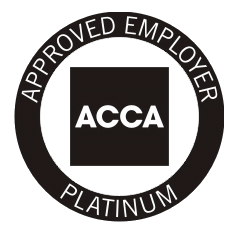Iranian Banking sector still stuck in Basel I!
Market News
– Despite significant upgrades in international standards pertaining to banks’ capital adequacy, the Central Bank of Iran still follows Basel I standards, which obliges banks and credit institutes to maintain this rate at 8%; however, the low capital adequacy rate (5%) along with high level of claims due have caused a crisis for banks, most specifically state-owned ones; to tackle this challenge, banks need to either raise their capital or adjust their assets; but, the current credit crunch which the administration is struggling with calls for severe and strict rules and supervision by those in charge for Iran’s banking sector to get through this path safe and sound. In line with reforms in the banking sectors, banks are obliged to implement Basel III standards until the end of 2018 to pave grounds for cooperating with their foreign counterparts.
– In its latest report, the Majlis Research Center enumerated the reasons behind the US dollar sharp rise over the past months. The report stresses that Iran has always enjoyed a positive trade balance as the result of foreign exchange from exporting oil and petrochemical products and currently is in possession of $110 bn reserves, based on the IMF report; nevertheless, over the final quarter of the past year plus early this year, the forex market saw significant fluctuations, pushing the forex rate 30% higher over the three month ended April 9th. The following list lies among the most important reasons behind this jump:
- Liquidity unleashed growth
- Limitations in connecting Iranian banks with international ones and money transfer
- Dependence on special locations, like Dubai, for forex transaction
- Dependence on intermediary forex currencies like US dollar and euro
- Dependence on SWIFT
- Capital flight due to concerns arising from the JCPOA
In the Market
Equities slipped further in recent action, with the TEDPIX extending its yesterday’s loss and closed 0.10% lower on 95,529.61. The IFEX on the other hand, entered the final hour roughly volatile and closed 0.40% lower. The disappointing performance of the market today was mostly due to reopening of giant Auto ticker, Saipa Co, which realized massive losses and opened 7% lower.
Other tickers of Automotive space saw a rise in demand early in the session with Mehrkam Pars topping the space; the spare parts mfg. companies are demanding a 15-23% price rise due to the growth in wages and materials; the space failed to keep that positive sentiment and eventually ended mostly in the red; Saipa Azin was the top gainer.
The Metals industry went under heavy sales pressure, led by Esfahan Steel; National Iranian Copper Industries, however, managed to grow more than 4%. The Iron Ore space settled with rather balanced trades.
Despite the falling of crude price, the Oil Products industry mostly finished in the green. Pasargad Oil went up by 4%.
Although the pharmaceutical sector had been mentioned to receive subsidy from the government, an official announced that drugs will be imported based on the unified rate of USD/IRR at 42,000 and EUR/IRR at 52,000 due to the complexity of the previously defined mechanism as well as insufficiency of the IRR 8,000 bn budget. Analysts believed that freeing the pharma prices from subsidies will have a positive effect on companies’ earnings. At the end of today’s session, despite a few tickers facing sell queues, the majority of names in the Pharmaceutical industry finished in the green.
The Construction space went through positive trades, despite a weak start. The Cement space, however, settled with slim loses.
Mobin One Kish returned to the IT & Communication space 8.4% higher, while Atie Dade Pardaz finished a tick below its flat line.
Source:
2018, Iranian Banking sector still stuck in Basel I!, Monday, May 28, p.1,<https://agahgroup.com>





